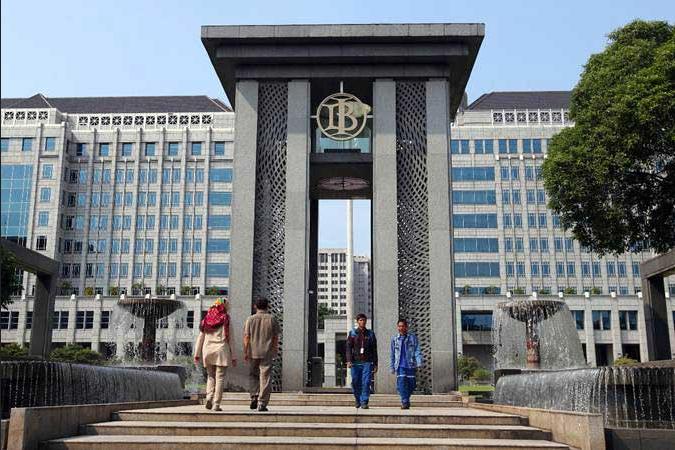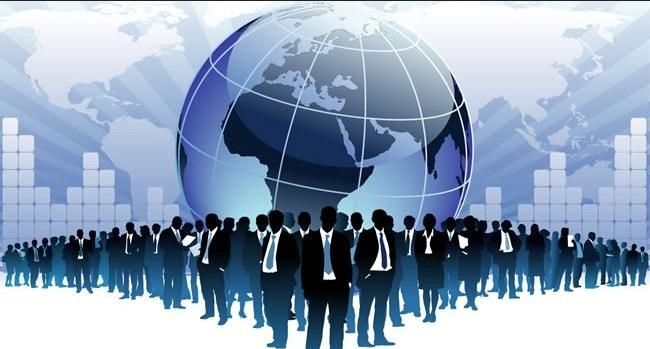If there is an institution that has defined and shaped the economy of modern times, it is undoubtedly the Central Bank. But what is the Central Bank? Its duties? Why is it so important for the economy and why do States depend so much on this institution to try to guide their economic policies? Why is independence considered an almost sacred value in economies?
Some history
The first Central Bank in history was the Bank of Sweden – RiskBank, which began operations in 1668 and was founded by Johan Palmstruch. It was a private bank, but it had authorization from the king of Sweden to operate according to state regulations. Today it is an independent Central Bank in charge of issuing Sweden’s currency and dictating the country’s monetary policy.
In 1968, on the occasion of the entity’s tercentenary, the Bank of Sweden created the Economic Sciences Prize in Memory of Alfred Nobel. This prize is awarded at the same Nobel Prize ceremony, which is why it has been called the Nobel Prize in Economics, although Alfred Nobel did not establish the economics prize.
The Central Bank, as an institution at the service of the State, also has its origins in July 1694 when the Bank of England was founded to provide money to the king and the State. Initially it was a private institution, but it was nationalized on March 1, 1946 as a consequence of World War II.
The creation of central banks therefore comes after private banking, which in the Middle Ages was dominated by wealthy families and Jews, who had no moral problems with banking interest. One of the most renowned private institutions in medieval Europe was the Medici Bank that operated in the 14th and 15th centuries.
The Concept of Central Bank
According to the Bank of the Republic of Colombia: The central bank is the institution that issues and manages the legal currency of a country, performing the function of banker of the banks. That is, it is the lender of last resort, since private commercial and investment banks or other public banks go to it to request money. The Central Bank controls the monetary (money), credit (setting basic interest rates) and exchange ( the exchange rate – accumulating foreign currencies or selling them when it considers necessary to maintain the stability of the local currency) systems.
In most countries the Central Bank is considered an institution independent of the government. This idea is not immune to controversy, since, in many countries, although the Central Bank is apparently Independent, the State can exert great influence over it through media pressure.
Functions of the Central Bank
The Central Bank, in modern times, has the central function of maintaining the value of a country’s currency, it does this by controlling interest rates and raising them when there is a danger of high inflation in the country.
- Guard a country’s gold and foreign currency reserves.
- Issue the legal money of the nation.
- Withdraw money that loses value due to inflation, physical wear and tear, as well as replace currency that has been withdrawn.
- Lending money to private and state banks.
- Advise the government on economic policy.
- Being the financial agents that manage the public debt of a nation.
- Monitor the solvency of other banks and compliance with existing banking regulations (depending on country legislation)
- In some countries the main function is considered to be the control of inflation, but in others this function is linked to the promotion of economic growth, so in many cases central banks can boost the economy by lowering interest rates and issuing more money within the economy to increase demand for goods and services.
Banking regulation
Central banks regulate their members. They require sufficient reserves to cover possible credit losses.
They are responsible for ensuring financial stability and protecting depositors’ funds.
In 2010, the Dodd-Frank Wall Street Reform Act gave more regulatory authority to the Federal Reserve. Created the Consumer Financial Protection Agency. That gave regulators the power to break up big banks, so they don’t become “too big to fail.” It closed loopholes for hedge funds and mortgage brokers. The Volcker Rule prohibits banks from owning hedge funds. It prohibits them from using investors’ money to buy risky derivatives for their own benefit.
Dodd-Frank also established the Financial Stability Oversight Council. Warns about the risks that affect the entire financial industry. It may also recommend that the Federal Reserve regulate nonbank financial firms.
The Dodd Frank law prevents banks, insurance companies and hedge funds from becoming too big to fail.
Provide financial services
Central banks serve as a bank for private banks and the nation’s government. They process checks and lend money to their members.
Central banks store foreign currency in their foreign reserves. They use these reserves to change exchange rates. They add foreign currency, usually the dollar or euro, to keep their own currency aligned.
That’s called a fixation and it helps exporters keep their prices competitive.
Central banks also regulate exchange rates as a way to control inflation. They buy and sell large amounts of currency to affect supply and demand.
Most central banks produce regular economic statistics to guide fiscal policy decisions.
Here are examples of reports provided by the Federal Reserve:
- Beige Book: A monthly report on the economic status of the regional Federal Reserve banks.
- Monetary Policy Report: A semiannual report to Congress on the national economy
- Credit Card Debt Report: A monthly report on consumer credit.
Duties of the Central Bank
Be accountable for its management before government and State agencies through independent auditors.
The Central Bank must make available to citizens all information related to its strategy, decision-making, monetary policy and evaluation of the state of a country’s economy.
Main objectives of the Central Bank
Depending on the country in which a Central Bank is located, it will have certain main objectives or goals. However, in general terms three fundamental goals of central banks are recognized.
High employment
Frictional unemployment is the period of time between jobs when a worker searches for or moves from one job to another. Unemployment beyond frictional unemployment is classified as unwanted unemployment.
For example, structural unemployment is a form of unemployment resulting from a mismatch between demand in the labor market and the skills and locations of workers seeking employment.
Macroeconomic policy generally aims to reduce unwanted unemployment.
Keynes characterized any employment created by an increase in wage goods (i.e., a decrease in real wages) as involuntary unemployment.
Price stability
Inflation is defined as the devaluation of a currency or, equivalently, the increase in prices relative to a currency.
Because inflation reduces real wages, Keynesians see inflation as the solution to involuntary unemployment.
However, “unanticipated” inflation leads to losses for the lender as the real interest rate will be lower than expected. Therefore, Keynesian monetary policy aims for a constant inflation rate. An Austrian School publication, The Case Against the Fed , argues that central banks’ efforts to control inflation have been counterproductive.
Economic growth
Economic growth can be improved through investment in capital, such as more or better machinery.
A low interest rate means that companies can borrow money to invest in their equity and pay less interest on it.
Therefore, reducing interest is considered to encourage economic growth and is often used to alleviate times of low economic growth.
On the other hand, raising the interest rate is often used in times of high economic growth as a countercyclical device to prevent the economy from overheating and prevent market bubbles.
Other objectives of monetary policy are : the stability of interest rates, the financial market and the foreign exchange market. Goals often cannot be separated from each other and often conflict. Therefore, costs must be carefully weighed before policy implementation.
Independence of the Central Bank
The independence of central banks has been a topic of extensive debate in economic theory. Many studies maintain that its independence is key to the proper functioning of the economy (Blinder, Alan S. (1999). The Central Bank: Theory and Practice, pages 54 and 55), controlling inflation, price stability and the economy.
Despite the above, many economists such as the Mexican Arturo Huerta González and the Nobel Prize winner Joseph Stiglitz maintain that Central Banks must serve the democratic interests of a nation, being subject to controls and regulations, as well as public participation in the process. debate on monetary policy. This school of thought maintains that the independence of the Central Bank is a political trick of the private sector to favor and keep its interests safe.
The Austrian economic school maintains that a Central Bank in the hands of the State would only encourage waste by the government, at the expense of citizens who would see uncontrolled currency issuance and high inflation that would wipe out citizen savings.
The main central banks of the world
United States Federal Reserve (The Fed)
More than 85% of all foreign exchange transactions are carried out with the US dollar. There is no doubt that the US dollar is the most traded currency in the world. The Federal Reserve is considered the most influential central bank in the world. And interest rate changes made by the US Federal Reserve have a significant impact on other currencies around the world.
The Federal Reserve has a division within it, namely the Federal Open Market Committee (FOMC), which is responsible for making decisions on interest rates. The FOMC meets eight times a year. And as you can imagine, the decisions made by the FOMC are closely monitored by investors and traders inside and outside the United States.
Bank of England (BOE)
The Bank of England is considered by many to be one of the most capable central banks. The main objective of the BOE is to maintain monetary and financial stability. The BOE aims to keep inflation at a target of 2% per year. Any deviation from that, and they take action to achieve that goal. The Central Bank of the Bank of England has a committee called the Monetary Policy Committee with which it is responsible for setting monetary policy. The Monetary Policy Committee consists of 9 members in total.
European Central Bank (ECB)
The European Central Bank (ECB) was organized after the creation of the EURO in 1998. The role of the ECB is to decide on monetary policy and provide price stability. The committee that is primarily responsible for this is known as the Governing Council.
The Governing Council is made up of 6 members of the ECB board and includes all the governors of the national central banks of the countries that make up the European Union. The ECB meets several times a month, however it only makes policy changes at 11 of these scheduled meeting times.
Swiss National Bank (SNB)
The Swiss Bank has a relatively small monetary committee consisting of 3 key people. The SNB is known to be conservative when it comes to interest rate decisions. The monetary committee of the Swiss National Bank meets quarterly. At the time of writing, the key person within the committee is Thomas Jordan, president of the SNB.
Bank of Japan (BOJ)
The Bank of Japan’s monetary policy committee is composed of the BOJ governor, two deputy governors and 6 other members. Since Japan’s economy relies heavily on exports, one of the main concerns of the Bank of Japan committee is to ensure a relatively weak yen. The BOJ is active enough in the open market to ensure this objective. The Bank of Japan generally meets once or twice a month.
Bank of Canada (BOC)
The Bank of Canada’s monetary committee responsible for rate decisions is known as the Governing Council. It consists of the governor of the Bank of Canada, a senior deputy governor, and four deputy governors. The BOC has set an inflation target of 1-3% per year , and has so far been successful in meeting that target over the past 15 years.
Reserve Bank of Australia (RBA)
The Central Bank known as the RBA has a monetary policy committee made up of the RBA Governor, a deputy governor, a secretary to the Treasury and six other members who have been appointed by the Australian government. The RBA has a target inflation rate of 2-3% per year. The committee meets eleven times a year to discuss and make monetary policy decisions.
Reserve Bank of New Zealand (RBNZ)
The Reserve Bank of New Zealand’s monetary policy decisions are in the hands of the Central Bank Governor. Unlike other central banks we have discussed, the RBNZ does not have a formal monetary policy committee. Instead, the governor has exclusive power over monetary policy decisions. The RBNZ has an inflation target of 1.5% per year , and current Governor Graeme Wheeler is responsible for meeting that target.
People’s Bank of China
The People’s Bank of China (PBC or PBOC in English; Chinese: 中国人民银行;) is the central bank of the People’s Republic of China responsible for carrying out monetary policy and the regulation of financial institutions in mainland China, as defined determined by Popular Banking Law and Commercial Banking Law. Valued at $3.21 trillion, the People’s Bank of China has had a larger holding of financial assets than any other central bank in the world since July 2017. Although it has a high degree of independence by Chinese standards, it remains an executive department cabinet level of the State Council.
The future of central banks
As technology evolves, the future of central banks will be tied to what has been called financial technology or fintech. The rise of decentralized currencies or cryptocurrencies has been considered a major challenge for central banks, since by not being issued by central authorities they can reduce the authority of traditional currencies, fiat money, and eliminate some of the benefits that These traditional banks have, such as the so-called seigniorage rights, which are the benefits obtained by issuing legal tender money.
Technologies such as blockchain, which have led to this evolution, present great advantages for the public (transaction security and high speed) and this is why central banks are now interested in issuing currencies based on these technologies, the so-called Digital Currencies issued by Central Banks or CBDC. China, especially, has shown interest in this type of currency, which can be conceived as a digital version of the official currency. In October 2020, the Central Bank of China began issuing some of these currencies (called DCEP ) to test the feasibility of their use. In February 2021, the United States Federal Reserve announced that it was much more actively investigating and evaluating the possibility of launching a digital dollar that would facilitate online transactions than in the past. Taking into account the rise in value of digital currencies such as bitcoin, and the possibility of China successfully entering the market for digital currencies that could threaten the hegemony of the US dollar, it has been speculated that currencies such as a digital dollar, a euro digital currency, a digital yen and a digital pound could help contain Chinese expansion and curb its attempt to have a virtual hegemonic currency in the short term.
According to the World Economic Forum, it can be inferred that the decisions of central banks on the implementation of distributed ledger technology (DLT) – here we are talking about blockchain and other forms of digital accounting records – and digital currency in the future will have far-reaching consequences on financial and monetary systems, national economies and the well-being of citizens, expanding financial inclusion and the efficiency of payment systems, as well as reducing the costs associated with traditional fiat money (such as banknote replacement damaged, replacement of devalued money, elimination of counterfeit currency).
Technological transformation will make it easier for central banks and regulatory authorities to engage in supervisory processes that limit tax evasion, fraud, money laundering and other forms of illicit activities. As digital payment technologies become more common, they can boost greater dynamism of the economy and contribute to crucial aspects such as the fight against poverty and thus greatly facilitate the lives of citizens. In this context, central banks will be able to acquire a more decisive role in the economy and at the same time will be called to be at the forefront of new developments that are revolutionizing the way in which individuals, institutions and systems relate to money. .
Recent discussions around the objectives of central banks
In the midst of the coronavirus crisis that shook the world in 2020 and part of 2021, a great discussion arose globally about what the role of central banks should be and what their objectives should be. Many central banks used monetary policy in the midst of the crisis as a means of supporting the economy and stimulating consumption, yet the debate persisted widely due to the divergences and economic perspectives that emerged throughout the world to confront the crises.
Martin Wolf, a columnist for the Financial Times decided to address this discussion and tried to give an answer, taking into account the main positions of contemporary economists on the matter. From Wolf’s perspective, several perspectives are seen, including: having a specific inflation goal, having specific price goals, having economic growth goals, having goals regarding the unemployment rate of an economy, having interest rate goals. real in the economy. In the midst of the discussions and reasoning, Wolf warns that it is quite a difficult task for a Central Bank to ensure a specific real interest rate in the economy and that the approach that continues to be used is that of inflation, which is widely accepted. from the Federal Reserve to the European Central Bank, passing through Latin American banks.
That is, although central banks are taking into account important and broader objectives such as the unemployment rate, economic growth, and the real interest of an economy, these elements are difficult to control because they do not depend on the actions that are taken. take in monetary policy, so central banks continue to consider inflation as their main objective, which is easier to evaluate and follow. In this way, central banks could focus on various macroeconomic objectives of interest, but their focus, at least in the short term, continues to focus on traditional goals.











